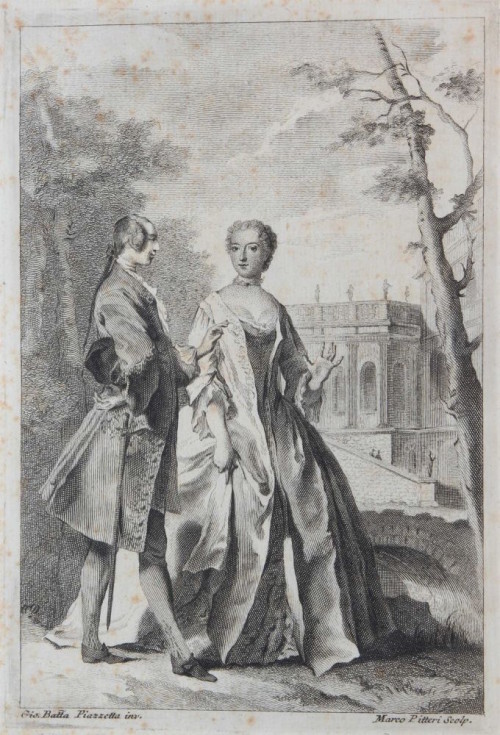Writing in 1804, Longchamps suggests that sharing the bill at dinner, dîner en manière de pique-nique was stylish in the 1740s. Perhaps, but it was an old memory, and by then, dining en pique-nique was common.
Longchamps explains that while in the employ of Emilie du Châtelet, a marquise, he supervised a festin (or soupé) at La Maison-Rouge, a cabaret [inn] in Chaillot, Paris. When it was over, and Longcahmps sought to pay the bill, he was surprised to learn that the cost had be shared by Châtelet and her friends: “J’ai lieu de présume qu’elle m’avait ne fit pas seule les frais de ce festin, et qu’un arrangement par forme de pique-nique avait été concerté à ce sujet entre elle et ses amies.”
Longchamps’s memory is spicy and scurrilous, and when he says that because it was a hot day, the ladies began taking off more of their clothes than they ought, he might be exaggerating. Madame de Châtelet, he writes in another anecdote, was not shy of showing herself naked amongst servants because they were, after all, servants. If there were men in attendance at the festin, he does not tell.
Featured Image: Madame seen here with her clothes on.
See Sébastien Longchamps and Jean Louis Wagnière. Mémoires sur Voltaire, et sur ses ouvrages. Paris: Aimie André, 1826; Marco Pitteri & Giovanni Batta Piazzetta. “Madame du Châtelet (unnamed) and an unidentified courtier.” In Francesco Algarotti’s Newtonianism for the Ladies, or Dialogues on Light and Colors [Il Newtonianismo per le dame]. Venice, 1737. The text is a series of unnamed conversations between Madame du Châtelet and Algarotti; Judith P. Zinsser. La Dame d’Espirit: A Biography of the Marquise Du Châtelet. New York, Viking, 2006; Rebecca L. Spang. “Rousseau in the Restaurant,” The Invention of the Restaurant: Paris and Modern Gastronomic Culture. Cambridge, Massachusetts: Harvard University Press: Massachusetts, 2000

